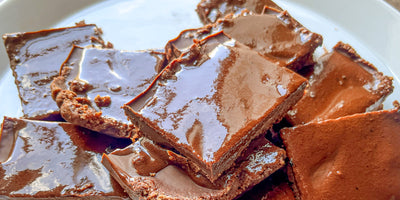All The Types Of Chocolate, Explained. (It's way more complex than just milk vs. dark.)
The different types of chocolate are distinguished by the ratios of ingredients used, such as chocolate liquor, cocoa butter, sweetener, and other added ingredients. The U.S. Food and Drug Administration (FDA) sets standards of classification for each kind of chocolate.
So, what’s the difference between semisweet chocolate and bittersweet chocolate? Here’s everything you need to know about the different types of chocolate.

Milk Chocolate
With its light brown color, creamy texture, and sweet flavor, milk chocolate is widely regarded as the most popular type of chocolate. It is made by combining chocolate liquor (cocoa solids and cocoa butter) with sugar, and milk (solids or powder). Sometimes an emulsifier, such as soy lecithin, is added to enhance its smoothness. According to the FDA definition, milk chocolate must contain at least 10% chocolate liquor and 12% milk, and not less than 3.39% of milk fat. Though higher quality milk chocolates often contain as much as 30-40% cocoa.
Milk chocolate product labels have only relatively recently started displaying cocoa percentages; this shift has introduced subcategories of milk chocolate like Dark Milk or Super Milk Chocolate, the latter describing milk chocolate with a higher-than-usual cocoa percentage. These chocolates usually range between 38% and 55% cocoa.
Milk chocolate flavor has a lot to do with the type of milk or cream product that is used in its manufacturer as well as the strength and taste of the cocoa liquor. Because the added milk or cream softens or mellows out the deep, bitter notes from the cocoa, it is easy to use over-roasted, lesser-quality cocoa beans to deliver flavor. When you taste a beautifully-made milk chocolate, made from fine cacao beans, you will definitely know the difference.
Though it's great in cookies, pancakes, brownies and more, it can be a bit finicky if you're melting it, as the high concentration of milk solids makes it prone to overheating.

Dark Chocolate
In recent years, dark chocolate has surged in popularity thanks to a number of articles being published about the health benefits. Dark chocolate, with its notable deep brown color, is the second most popular type of chocolate.
Dark chocolate is fairly simple in composition. It is typically made from two ingredients — chocolate liquor and sugar. Often referred to as "bittersweet" or "semisweet", dark chocolate must contain at least 35% chocolate liquor but usually contains closer to about 50%. The higher the percentage of cacao, the less sweet and more bitter...or dark! Dark chocolate doesn't contain any milk solids, which means it doesn't have the same creaminess as milk chocolate—but it does have that characteristic "snap" when you break it.
The flavor profile of dark chocolate can vary widely based on the cocoa content of the chocolate. It is often slightly-sweet and chocolatey, with notes of baked brownie, red fruit, and brown spice (think cinnamon or allspice). Due to its chocolate-forward flavor profile, dark chocolate is great for baking when your recipe needs a rich, chocolatey flavor.
Baking Chocolate
No matter what you call it ("baking," or "unsweetened"), this chocolate is 100% cacao—it's essentially chocolate in its purest form without any added sugar to mask the bitter flavor of natural cacao. This stuff is not for snacking but it's great for baking as it imparts a rich chocolate flavor and allows you to control the added sugar.

White Chocolate
White chocolate is unique because it does not contain any cocoa solids. The cocoa solids are what give chocolate it’s dark brown color and chocolatey taste that we all know and love. White chocolate is made from the cocoa butter extracted during the cacao bean refinement process. Chocolate purists have argued that because it lacks chocolate liquor and a "chocolatey" taste, it shouldn't be called chocolate, but its smooth, rich, vanilla-like flavor has won over plenty of others.
White chocolate must contain at least 20% cacao butter and 14% total milk solids, not less than 3.5% milk fat, and a maximum of 55% sugar.
White chocolate is great for cooking, baking, and decorating. The dairy-forward flavor profile adds subtle richness to any dish, while still letting other flavors shine through.
Blond Chocolate
If you're skeptical about white chocolate, just give blonde chocolate a try! Also known as caramelized white chocolate, this sweet treat is basically just white chocolate that's been roasted at a low temperature to bring out its warm, butterscotch flavors. You might see it labeled "gold" chocolate or "dulcey" chocolate.

Ruby Chocolate
This rosy-hued chocolate is the newest chocolate to hit the block since the 1930s invention of white chocolate. First developed in late 2017, ruby chocolate comes from ruby cacao beans, which are grown in South America and West Africa. It's best described as a fruity, berry-flavored white chocolate, though there are no actual berries involved—the unique flavor and color comes from the cacao bean itself—the ruby cacao bean.
Because this is a relatively new discovery (and the exact cacao making process developed by Barry Callebaut is proprietary), there is no standard FDA definition.
This trendy new type of cacao is great for creating bold, fruit-forward chocolate treats and colorful Instagram-worthy chocolate confections.
Cocoa Powder
Cocoa powder is created when chocolate liquor is separated under high pressure, and the resulting cocoa solids are crushed into a powder. Unsweetened cocoa powder is essentially 100% cocoa.
There are two types of cocoa powder, natural cocoa and dutch-processed cocoa. Natural cocoa is lighter brown in color and has a strong chocolate flavor that is often acidic. Dutch cocoa is natural cocoa that has been alkalized to neutralize the acidity. The dutch-process gives the cocoa powder a deep, warm color and slightly milder flavor.
Unsweetened cocoa, especially dutch cocoa is great for baking. When added to a recipe, it can create a delicious, deep chocolate flavor. Unsweetened cocoa can be added to spice rubs and moles to give the dish a richer, more complex flavor. Dutch-processed cocoa is often used when making hot chocolate, because the extra process allows the powder to easily blend with liquids.

Used primarily by professional bakers or confectioners, this chocolate contains a very high percent (at least 30 percent) of cocoa butter, as well as a high percentage of chocolate liquor. This high ratio makes it expensive, but it also means that the resulting chocolate is smooth and melts quickly and evenly. Couverture chocolate is the preferred chocolate for tempering and enrobing candies. It comes in dark, milk, and white varieties.
All this chocolate talk making you hungry? Shop Wild West Chocolate.
From creamy milk chocolate to rich dark chocolate, there's a Wild West chocolate to satisfy any craving.
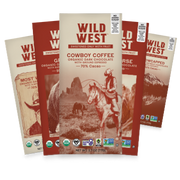 Bars
Bars
 Bear Claws
Bear Claws
 Merch
Merch
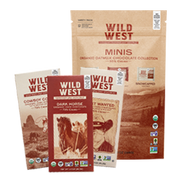 Variety Packs
Variety Packs
 Shop All
Shop All
 Our Story
Our Story
 Sustainability
Sustainability
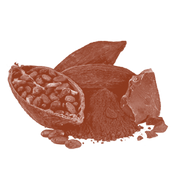 Ingredients & Certifications
Ingredients & Certifications
 Artist Collaborations
Artist Collaborations
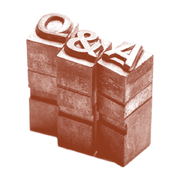 FAQs
FAQs




